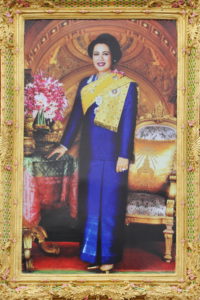When we think of Mother’s Day, we often think of flowers and Hallmark cards. But the traditions of celebrating and honouring mothers can be traced back to ancient civilizations where they held festivals and paid tribute to mother Goddess figures such as Isis (Egyptian); Rhea, Hera and Demeter (Greek); and Cybele, Juno and Ceres (Roman). Mother’s Day as we know it today has a conflicted history, and we have collected some of the unique beginnings of Mother’s Day from around the world.
United States
Mother’s Day began in the United States in 1870 as an anti-war statement. The Mother’s Day movement was started by activist Julia Howe, who called on mothers to promote peace and protest the killing of sons by other sons.
The movement for an official Mother’s Day was revived in 1908 by Anna Jarvis in honour of her deceased mother, who was active in establishing Mother’s Day Work Clubs during the Civil War. By 1912, many US states had adopted Mother’s Day but it only became official in 1914 when it was formally established by US President Woodrow Wilson. To Jarvis’s horror, she witnessed the increasing commodification of Mother’s Day and by 1920, she had started openly protesting against the Mother’s Day movement she started, spending most of her wealth taking legal action against various groups and businesses.
By the time Jarvis passed away in 1948, the Mother’s Day tradition had spread to over 40 countries. Today it is observed in over 100 nations around the world.

France
Influenced by the US Mother’s Day movement, in 1920, France adopted the tradition of celebrating mothers with the presentation of Médaille de la Famille française (Medal of the French Family), a medal awarded by the French government to honour mothers who had raised four or more children.
Germany
In Germany, Muttertag or Mother’s Day has a dark history. Mother’s Day was officially declared a holiday in 1933 under the Hitler regime as part of a Nazi motherhood cult. Mothers were awarded medals known as the Mutterkreuz (Mother cross) for giving birth to children for the Vaterland (fatherland). After World War II, the Mother’s Day tradition was revived but took on the commercial US traditions of flowers and cards.

Thailand
In Thailand, Mother’s Day was first introduced on 15 April 1950, but the date was changed to 12 August in the 1980s to promote the royal family. The national holiday celebrates Her Majesty Queen Sirikit’s birthday as the mother of all Thai people, and is celebrated throughout the nation with festivals, royal symbols and the gifting of white jasmine flowers.
Australia & New Zealand
The Australian and New Zealand Mother’s Day is similar to the United States with the use of carnations as an emblem of mother love. The tradition of carnations was founded by Jarvis, who distributed white carnations because they were her mother’s favourite flowers. Although the tradition of gifting flowers endures in Australia and New Zealand, it has since evolved to incorporate different colours and flower preferences based on ‘Mum’s favourite’.
While the history of Mother’s Day has a surprising dark twist, the meaning of Mother’s Day today remains as a day to celebrate mums and the role they play in our lives. Although the role of mothers has evolved, the meaning of ‘Mum’ is timeless. Mother’s Day in Australia remains one of the biggest celebrations to honour one of the most important figures in our life. Thanks Mum!

